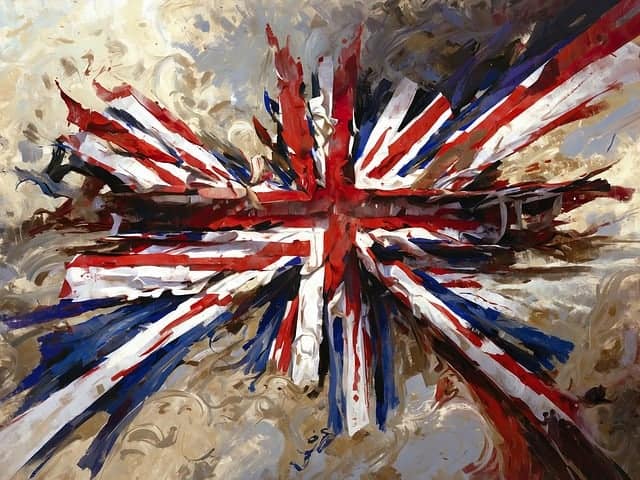The world of marketing may be dominated by digital strategies, but print remains a powerful tool for brands seeking to make a memorable impact. While the digital realm offers immediacy and wide reach, print brings something different to the table – it’s tangible, enduring, and often creates a stronger emotional connection with consumers.
Many leading UK brands have harnessed the unique strengths of print, producing standout campaigns that not only grab attention but deliver measurable success. In this blog, we’ll take a closer look at several standout UK print campaigns and explore what made them so effective.
John Lewis – The Power of Emotional Storytelling in Print
Campaign Overview
John Lewis has built a reputation for delivering emotionally powerful Christmas advertisements on TV, but they’ve also mastered the art of complementing these campaigns with print. The retailer often uses print media to extend its brand messaging beyond the screen, providing consumers with high-quality printed catalogues and magazines to browse through their products in detail.
In their 2020 campaign, John Lewis adopted a multi-channel approach, utilising print to enhance the emotional storytelling of their ad. They created a printed holiday catalogue filled with beautifully designed illustrations, product ideas, and emotional narratives that reflected the themes of kindness and giving. The catalogue acted as a physical extension of their Christmas TV ad, blending storytelling with product promotion.
What Made it Effective
– Emotional Engagement: The use of storytelling in the catalogue allowed customers to emotionally connect with the brand beyond the screen. The tangible nature of the print materials gave consumers something they could hold and refer to repeatedly.
– Brand Consistency: The print materials were perfectly aligned with the TV ad in tone, colour scheme, and messaging, providing a seamless brand experience across channels.
– Luxury and Tactility: High-quality paper stock and engaging design helped elevate the perception of John Lewis as a premium retailer, reinforcing the brand’s image.
Coca-Cola – Personalisation at Scale: The ‘Share a Coke’ Campaign
Campaign Overview
The ‘Share a Coke’ campaign launched in the UK in 2013 and quickly became one of the most iconic print campaigns. Coca-Cola replaced their traditional logo on bottles with popular first names, encouraging consumers to find their own personalised bottle and share it with friends. While much of the campaign was digital, print played a significant role. Billboards, in-store displays, and posters all featured the personalised name bottles, bringing the campaign to life on a grand scale.
In particular, Coca-Cola used personalised direct mail to send bottles with specific names to influencers and celebrities, creating massive social media buzz. They also produced print advertisements in national newspapers and magazines showcasing various names and encouraging people to get involved.
What Made it Effective
– Personalisation: By replacing the logo with individual names, Coca-Cola created a sense of personal connection, making each customer feel like the campaign was directly speaking to them.
– Wide Reach: Coca-Cola used print to extend the reach of their digital campaign. Billboards, in-store displays, and personalised direct mail allowed them to capture attention offline and lead consumers back to engage with the brand digitally.
– Cross-Channel Integration: Coca-Cola seamlessly blended print with social media. Consumers who saw their names on posters or bottles were encouraged to post photos online, creating a viral cycle of brand promotion.
IKEA – Creativity and Utility: The ‘Cook This Page’ Campaign
Campaign Overview
IKEA’s marketing is renowned for its creativity and practicality, and its “Cook This Page” campaign in the UK took print innovation to another level. The Swedish retailer created a set of interactive, printed parchment papers with illustrated food recipes. The printed posters were fully functional – consumers could place the ingredients directly on the page and follow the illustrated instructions by folding the paper and cooking the food. The posters were distributed in stores and sent out in direct mail as part of a larger campaign to promote their kitchenware range.
What Made it Effective
– Interactive Design: The campaign turned print into a functional tool rather than a passive medium. Consumers could engage directly with the posters, following recipes and using the printed materials as part of their cooking experience.
– Innovation: This was an excellent example of print innovation. By adding utility to the print, IKEA was able to stand out and create a campaign that captured consumers’ attention in an entirely unique way.
– Brand Alignment: The campaign perfectly aligned with IKEA’s brand messaging – accessible, affordable, and clever design solutions for everyday life. The printed materials reflected their brand ethos of offering functional, stylish products for the home.
Guinness – Using Minimalism in Print Advertising
Campaign Overview
Guinness has a long-standing tradition of creating memorable print ads that utilise clever design and minimalism. One of the most iconic examples is their 2017 “Made of More” campaign. The print ads showed the iconic Guinness pint glass, but instead of filling it with beer, they used other striking black-and-white imagery (like a Guinness pint-shaped image of a surfer riding a wave). The message: Guinness is more than just a drink – it represents experiences, stories, and moments.
These print advertisements appeared in magazines, newspapers, and on billboards across the UK, creating visual intrigue with simple, minimalist design elements that captured attention.
What Made it Effective
– Simplicity and Minimalism: The minimalist design captured attention quickly, which is crucial in the fast-paced world of print advertising. Consumers could instantly recognise the Guinness branding, even with very few design elements.
– Brand Identity: The use of iconic imagery and colour schemes made these print ads unmistakably Guinness. The brand leaned into their strong identity and reputation, allowing the ad to communicate more with less.
– Storytelling: Each print ad carried a deeper meaning beyond the image, associating the pint glass with various experiences and emotions. This transformed the product into more than just a drink – it became a symbol of life’s moments.
Burberry – Bringing Digital Innovation into Print
Campaign Overview
Burberry has long been known for its innovation, both in fashion and marketing. In 2016, the British luxury brand decided to merge digital innovation with traditional print advertising. They launched an interactive print campaign in collaboration with Google that combined digital technology with print media. Readers of high-end UK magazines could scan Burberry’s printed ads with their smartphones, which then triggered an interactive digital experience that let consumers see behind-the-scenes footage of the brand’s latest collection.
Burberry also sent out personalised print invitations for exclusive in-store events, where customers could use augmented reality (AR) to interact with products in-store via their mobile devices.
What Made it Effective
– Digital and Print Integration: By combining digital technology with print, Burberry created an interactive and engaging experience that extended the campaign’s reach far beyond the printed page. It turned a static medium into a dynamic one.
– Exclusivity and Personalisation: By offering personalised print invitations and exclusive digital experiences, Burberry reinforced its luxury image and made customers feel valued.
– Cutting-Edge Innovation: This campaign placed Burberry at the forefront of blending traditional print with modern technology, positioning the brand as a leader in marketing innovation.
Print marketing continues to play a vital role in successful campaigns, even in today’s digital age. The tactile, tangible nature of print gives brands the opportunity to create memorable and emotionally engaging experiences for their audience. Whether through personalisation, interactivity, or creative design, print can elevate a brand’s presence and connect with consumers on a deeper level.
These case studies of successful UK print campaigns show that when print is used thoughtfully and creatively, it can drive powerful results. From iconic brands like Coca-Cola and Guinness to luxury fashion houses like Burberry, the ability to blend the physical and digital, as well as harness emotional storytelling, can create campaigns that resonate with consumers long after the initial interaction.
Looking for ways to incorporate successful print strategies into your own campaigns? Contact us today, and let’s bring your ideas to life.


Recent Comments